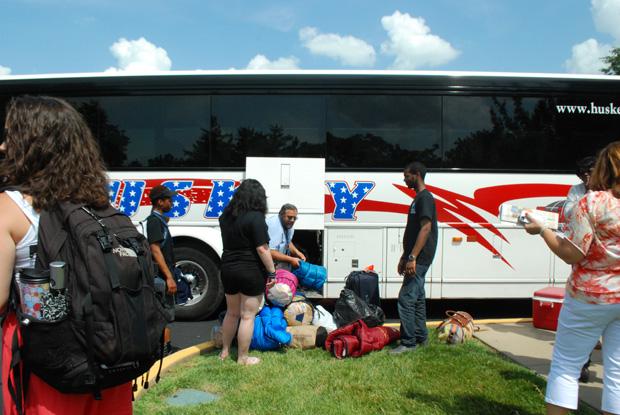‘Troublemakers of the best kind’
Published July 3, 2013
Twenty-one days, 13 cities and more than 75 people and places: The students stepping off the bus to the applause of family and friends late last month had been on quite a ride.
These high school students, who just completed their sophomore and junior years, are members of Cultural Leadership, a local youth organization that seeks to view and resolve issues of inequality and social justice through African-American and Jewish lenses.
The year-long program, which this year included 14 African-American and 13 white students from an array of faiths, features a 21-day summer trip across the United States to visit sites, cities and people of significance to the struggle for civil and equal rights.
The current group of students, nine of whom are Jewish, is the ninth class to have completed what Cultural Leadership Executive Director Holly Ingraham called the “transformative journey.” The students met such notable figures as U.S. Supreme Court Justices Ruth Bader Ginsburg and Clarence Thomas, U.S. Senators Roy Blunt and Claire McCaskill, Rep. John Lewis and the Rev. Al Sharpton.
The group returned from their expedition June 25 to reunite with their families at Central Reform Congregation and to speak to classmates, parents and friends about their experiences.
Each described their “transformational moment.” Some spoke of meeting people who changed their viewpoints and worldviews, others of visiting places and museums that exposed problems to them that they had never considered.
Mary-Kate Mudd, a junior at Parkway North High School, told of the moment that she realized she wanted to work in civil rights law. On the trip, Mary-Kate spoke alongside the Rev. Al Sharpton about inequality, a topic that struck her.
“Cultural Leadership works to create the inclusion and equality that the world is supposed to have,” she said. “And this is so important because we see, even in the St. Louis area, that things are very uneven. Having this experience really helps us learn that not everything is equal, but we have an opportunity to change that.”
For Stephanie Briggs of Cleveland NJROTC High School, the transformational moment came at New York’s Museum of Tolerance, where the students learned about genocide. Struck by a depiction of the Rwandan tragedy, she felt stirred to action.
“When we saw the video about Rwanda, it didn’t just say, ‘These people were killed’, it said ‘They were butchered,” Stephanie said. “It was shocking. That’s when I personally realized that I needed to do something for my community, for my country, for the world.”
Past Cultural Leadership classes have proven that the lessons learned on the journey don’t end with the trip.
Two students from Class 3, Richie Gallant and Tyjuan Morrow, founded the peer-to-peer mentoring program Students Working for a Purpose; Class 4 alum Kyriah Shannon advocated for the first observance of Black History Month at Ladue Horton Watkins High School in six years while Hannah Rosenthal of Class 5 pushed to make Ladue High part of “No Place for Hate,” an Anti-Defamation League program that works to combat bullying and bigotry.
After all, Ingraham said, the goal of Cultural Leadership is to give teens the tools to be “troublemakers of the best kind.”
Mary-Kate concurred that the transformational journey had done just that.
“I realized that I have the potential to speak out and make things happen,” she said.















